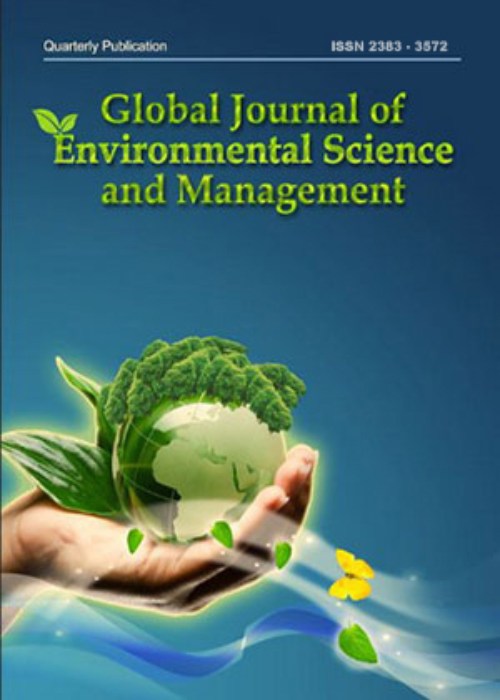Using benthos a bioindicator to assess the efficiency constructed wetland community wastewater treatment system
Author(s):
Article Type:
Research/Original Article (دارای رتبه معتبر)
Abstract:
BACKGROUND AND OBJECTIVES
The increasing population and urban growth have led to a higher demand for water in various sectors, resulting in a significant amount of wastewater. Constructed wetlands mimic natural wetlands, using the interaction between plants, soil, and microorganisms to treat wastewater efficiently. This study assesses the diversity, species composition, and distribution of benthic organisms in a community wastewater-filter grass system and explores the relationship between water quality and benthos.METHODS
Water samples were collected from plant plots between December 2021 and March 2022. On-site measurements included temperature, dissolved oxygen, salinity, and pH, whereas laboratory analysis encompassed the biochemical oxygen demand, ammonia, nitrate, total phosphorus, orthophosphate, and suspended solids. Soil samples were taken before and during planting at 2-week intervals, evaluating organic matter, pH, electrical conductivity, salinity, phosphorus, potassium, calcium, magnesium, and plant growth indicators. Benthos sampling involved polyvinyl chloride pipe cores at a depth of 5 cm from the soil surface. Statistical tests were performed to analyze the water quality data.FINDINGS
The study observed a decrease in Chironomid abundance in both constructed wetland systems, indicating their effectiveness in treating wastewater. A comparison of system types revealed that the 5-day detention–2-day dry release system exhibited higher Chironomid abundance than the continuous flow system, and the biological oxygen demand maximum decreasing rate was 95%. The ammonia and nitrate maximum decreasing rates were 97% and 94%, respectively, indicating greater wastewater-treatment efficiency. The study also identified diverse benthic organisms, particularly chironomids, as bioindicators for assessing wastewater conditions.CONCLUSION
The continuous flow system and the 5-day detention–2-day dry release system of constructed wetlands can reduce the organic compounds and increase the oxygen levels in the plant plots. The interaction among plants, soil, and microorganisms is critical in wastewater treatment. In addition, the study highlighted the diversity and abundance of benthic organisms, particularly chironomids, which were more prominent in the continuous flow system. Consequently, the 5-day detention–2-day dry release system was more efficient in treating wastewater than the continuous flow system.Keywords:
Language:
English
Published:
Global Journal of Environmental Science and Management, Volume:9 Issue: 4, Autumn 2023
Pages:
47 to 60
magiran.com/p2622608
دانلود و مطالعه متن این مقاله با یکی از روشهای زیر امکان پذیر است:
اشتراک شخصی
با عضویت و پرداخت آنلاین حق اشتراک یکساله به مبلغ 1,390,000ريال میتوانید 70 عنوان مطلب دانلود کنید!
اشتراک سازمانی
به کتابخانه دانشگاه یا محل کار خود پیشنهاد کنید تا اشتراک سازمانی این پایگاه را برای دسترسی نامحدود همه کاربران به متن مطالب تهیه نمایند!
توجه!
- حق عضویت دریافتی صرف حمایت از نشریات عضو و نگهداری، تکمیل و توسعه مگیران میشود.
- پرداخت حق اشتراک و دانلود مقالات اجازه بازنشر آن در سایر رسانههای چاپی و دیجیتال را به کاربر نمیدهد.
In order to view content subscription is required
Personal subscription
Subscribe magiran.com for 70 € euros via PayPal and download 70 articles during a year.
Organization subscription
Please contact us to subscribe your university or library for unlimited access!


